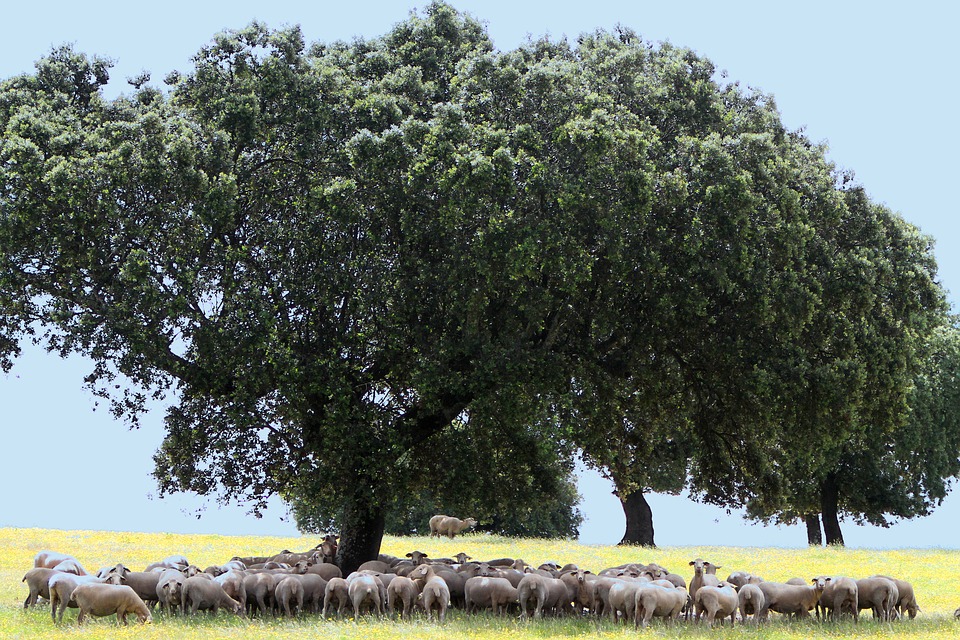
Despite the climate change mitigation emphasis on carbon sequestration, building soil carbon is first about food security, second about atmospheric carbon drawdown. By working with nature’s natural cycles to provide nutritious food with a low environmental footprint, Regenerative Agriculture will provide the transition from fossil-fuelled agro-chemistry to utilizing the farm’s natural resources, argues Stuart Meikle in the second part of this series.
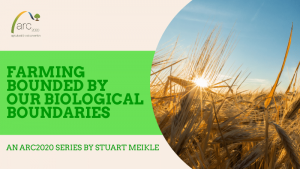
Farming to naturally regenerate plant nutrients
A sustainable food system is one that will be able to generate nutrients from natural sources, and without using fossil-fuel supplied energy. Given that pre-1900 the human population was fed using accumulated soil fertility, such is feasible, for a few. Also, in times of war, the likes of Great Britain in the 1940s was also able to sustain itself briefly by exploiting the fertility accumulated in its grasslands. It was not rebuilt because artificial fertility became widely available and the economic choice.
That access to artificial fertilizers throughout the latter half of the 20th century then created a false sense of security during which real soil fertility was largely forgotten.
The rise of what is called regenerative agriculture shows that times are changing. It is all about soils and how soils can be managed to produce harvests without resorting to artificial fertilizers. As the functionality of the soil becomes paramount, so scrutiny is also placed on all that shocks the soil biome faces, be it tillage, pesticide use, or the application of artificial fertilizers (which may include unprocessed manures from housed farmed animals).
Regenerative agriculture also requires the careful consideration of system offtake, be it for food, fibre or biofuel.
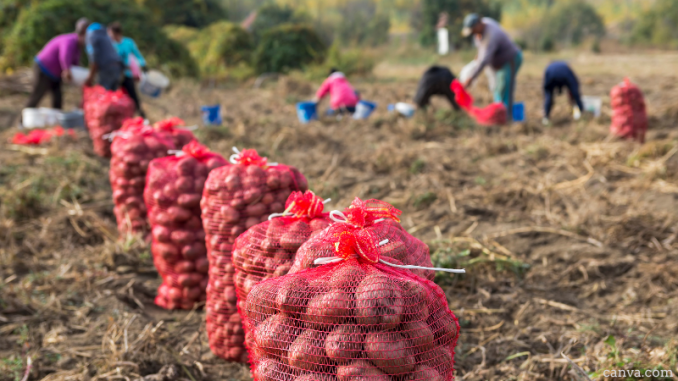
Regenerative agriculture explained
Regenerative agriculture is not a single system as, unlike organic farming, it is not governed by rules. It includes practices that may also be found under the banners of organic farming, conservation agriculture, pasture-fed, agroecology, agroforestry and holistic management. Regenerative agriculture is about working with nature’s natural cycles to provide nutritious food with a low environmental footprint. It is also about the regeneration of the businesses that are the heart of food production. Regenerative agriculture is a soils-first farming approach where the key is a healthy soil biome that feed plants and vice versa. The ‘regenerative’ reflects the focus on replacing nutrients lost to inevitable offtake (as food, fibre or fuel) from natural, ‘biogenic’ sources. As every farm is different and husbandry varies from farm to farm, it is not about rules but husbandry principles. Regenerative agriculture will provide the transition from fossil-fuelled agro-chemistry to utilizing the farm’s natural resources.
Regenerative agriculture is about the interaction between the soil biome and plants. The objective is to mimic how natural grasslands can build soil fertility. This can then be exploited later for offtake cropping. When, in the past, offtake cropping has predominated, the plant-available phosphates and potassium have been consumed.
Tillage has also triggered the loss of soil carbon and with it the ability of the soil biome to function. Soils have become biologically inactive and in the worst cases physically eroded. This is a serious, global food security issue.
The operative phrase above is ‘how natural grasslands can build soil fertility’. It is often forgotten that arable lands were originally grasslands or forests or, the in-between, woodland pastures. Arable land is a humankind invention that has never existed in Nature. Thus, we should not be surprised that arable lands do not function as Nature intended and are incapable of providing harvestable abundance without external help, be it in the form of artificial fertilizers, composts or imported manures.
If the artificial fertilizer availability is limited and energy limits the use of the latter two, just how are we to build arable soil fertility? It is no coincidence that broadacre organic systems include rotational crops that can mimic grassland functionality to build soil fertility.
The situation with arable land has often been made worse where decades of farming practices have reduced soil carbon and humus and biologically degraded the soil. (When people talk about how many harvests are left in our soils, always check that they are talking about biological life and not its physical state; inert soil grows little.)
The thriving soil biome contains a myriad of organisms that work as a whole. They work with a diversity of plants. It is a complexity that we are only just beginning to understand, but clearly our recent propensity for simplistic monocultures does not work. Nowhere in nature are there successful monocultures and there is a reason why. By imposing a monoculture on an ecosystem, we are still largely unaware of what we are breaking or inhibiting.
An absolute priority for farming research must be to enhance our understanding of how plants and soils interact to feed each other with carbon, nitrogen, phosphorous, potassium and the array of necessary trace elements. We will need to eventually utilize the symbiotic and diverse plant/soil-biome/animal relationships to feed ourselves.
Hence, it is not by chance that regenerative agriculture is about sward diversity and polycropping. The evolution of agroforestry systems is further seeking to bring yet greater diversity into food and biofuel production systems.
As plant diversity within systems rises, either simultaneously or consecutively within rotations, how to harvest the systems with minimal, detrimental offtake is the question. Using nature-mimicking grazing by herbivores is one answer. They can sympathetically live within the plant-soil biome ecosystem while providing opportunities for nutrient offtake (our food). In the past the interactive three-way plant-soil-herbivore relationship has been able to accumulate soil fertility but, sadly, that fertility has been consumed in the 19th and early 20th centuries.
With the advent of arable farming, the challenge for famers became how to accumulate soil fertility for later offtake cropping. Thus, the advent of rotational farming systems pre-1900. Guano, be it collected from the wild or harvested from the pigeonniere or dovecote, was already in use to supplement grassland-built fertility. Night soil as a recycled, post-usage nutrient source has gradually become unacceptable or too contaminated to use.
As artificial fertilizers’ fossil-fuel dependency and propensity to pollute becomes ever more evident, it will be necessary to return to systems that are able to regenerate offtake nutrients from natural sources. It will again be about rotationally harvesting plant-based nutrients to supplement animal-based nutrients without reducing vital soil functionality and fertility. It will be a case of back to the future to identify our nature-based solutions.
Where soil fertility accumulation can be done to excess, carbon sequestration can occur. Despite the climate-change mitigation emphasis on such, building soil carbon is first about food security, second about atmospheric carbon drawdown. Drawdown will occur from soil carbon building practices targeted at restoring the biological health to soils, but the climate change benefits are a consequential, but major, side effect of soil restoration.
The protection of soil carbon is a key aspect of regenerative agriculture. Likewise, with conservation agriculture.
In practice, that means maintaining vegetative cover across arable land at all times. They are called cover crops for a reason. They are also used to hold nutrients that might otherwise be lost during the between-harvestable-crop phases.
Within regenerative systems, the principle is also to ensure that there are living roots active within the soil at all times. It is they that feed the soil biome. Such non-offtake crops can also be judicially harvested by grazing herbivores, with a resultant yield of food and fibre. The important point is that grazing practices should not defoliate the plant to the point where consequential root shed inhibits the whole, vital, soil-feeding process.
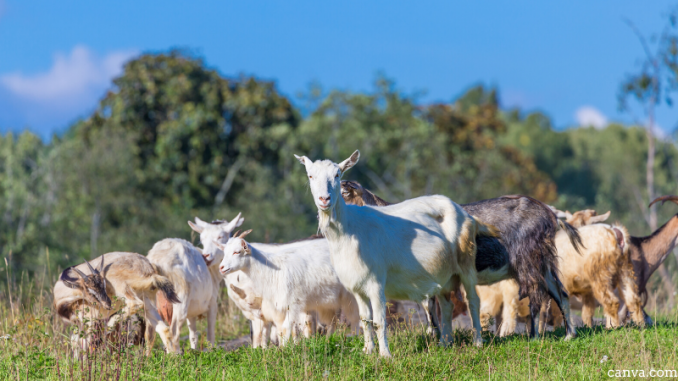
Herbivores in our food systems
Humans are omnivores with little ability to efficiently utilize plant cellulose. By contrast, herbivorous ruminants or, to be exact, the bacteria within their rumen, are able to effectively digest plants. They make the nutrients they harvest available to other species, be they in the soil biome or omnivores or carnivores. For humans they have long since been a source of nutrient-dense, nutrient-complex foods (and completely biodegradable fibres). For the plant, the herbivores swiftly biodegrade post-reproductive-phase plant material and make the nutrients therein available for the next growing season. It is another of nature’s nutrient-cycling symbiotic relationships.
Within a fossil-fuel-free agricultural system, such a relationship creates an opportunity to harvest nutrients for human use. If the herbivore is grazing post-senescence material in situ, an offtake opportunity occurs whereby only the minimum of offtake is removed from the system, while the rest of the nutrients are recycled naturally.
In the early season, herbivores graze young growing plants. The rational is that grazing stimulates plant growth and, with some plants, encourages tillering and the formation of a greater number of seed heads. Such grazing occurs randomly with the nutrients being cycled and made available to other soil-based organisms as an energy source. They then undertake their symbiotic function. On a plant-to-plant note, grazing will offer other species the opportunity to thrive, thus improving the diversity of the whole and enabling other plants to use their own, different nutrient sourcing capabilities to the mutual benefit of all. Pre-senescence crop management offers an offtake opportunity, albeit it needs to happen within an understanding of the functionality of the whole system.
Until recently, the herbivore was a grazing creature, either herded by us humans or roaming free where they had a pivotal role within grassland ecosystems. They are an apex interactor around which many other species have evolved to live in a symbiotic relationship. If arable land is to regain some of its grassland functionality, the grazed herbivore is crucial, but so are the likes of, for example, the dung beetles that live with them. Many of our specialized landscapes have lost the herbivore and that loss will also have meant the loss of the species that evolved with them within a functioning grassland ecosystem. Food chain collapse will have also occurred.
Where herbivores are grazed within farming systems, the systems must rapidly evolve to ensure that there is minimized nutrient offtake, plant nutrient losses and fossil fuel usage. The ultimate objective must be to produce fossil-fuel-free food and fibre. It is likely that the food nutrient to plant nutrient relationship will be important.
With the rise of artificial fertilizers, the role of herbivores as the key interactors within the natural systems that source and circulate plant nutrients has become neglected. Instead, they have gone from being fertility builders to being displaced consumers of arable-grown feeds or constrained to grazing upon monocultures that have to actually be fed by artificial fertilizers. They were once soil fertility builders but the way they are farmed now can lead to nitrate pollution and N2O emissions. It is not a great testament to late 20th century agricultural science.
However, pasture management is changing so through grazing, manuring and trampling, herbivores can provide nutrition to the species of the soil biome and, consequentially, help build soil fertility. It is that which will, again, have to underpin the provision of plant-based foods to the human diet as artificial fertilizer access declines. It is not by chance that the newer approaches are akin to how herbivores grazed pastures naturally. Tall swards are grazed heavily for very short periods before the herd moves on to fresh pastures. Sward rest periods are long.
The herbivore harvests herbage, partially utilize what they eat, and then return the residual to their immediate living environment. The various elements of the soil biome have evolved to live in a symbiotic relationship with these grazing herbivores. Ultimately everything is recycled. The human has broken this cycle through regular offtake (milk) or permanent offtake when the carcass is removed. When such happens, the constituent nutrients within the harvest are removed from the local ecosystem’s cycles. The future challenge is how to replace them.
It is possible to produce foods in animal-free farming-systems but naturally accessing plant nutrients means that such are limited. Simply, from a plant nutrient perspective, sustainable broadacre systems need grazing animals.
At the other end of the spectrum from the herbivores grazing at pasture or on rotational leys, are the urbanized herbivores that live at a distance from the land that feeds them. Not only are they dependent on feed grown with artificial fertilizers, but they are also unable to perform the grasslands functions that Nature intended for them. Inevitably, inclement weather will force farmers to house their farmed herbivores for periods, so the compromise will be to ensure that nutrients are recycled back to the land that feeds them, albeit with the caveat that the way it is done must not be detrimental to soil biome health. It will also come at an energy cost, but the opportunity should be taken to capture biogas from collected manures and to utilize that to power agriculture.
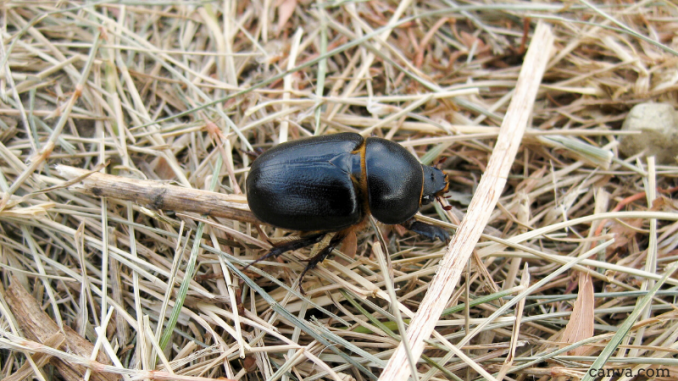
Regenerative agriculture – the full cycle
Regenerative agriculture is about mimicking ecosystems and managing them for food, fibre and fuel with offtake as both animal and plant-based products. It is about building the soil fertility from atmospheric and soil-based sources to allow later ‘plant-based’ offtake cropping. It is this fertility regeneration that presents the problem that farmers and researchers must resolve in the coming years. With the burgeoning population of the last 100 years, fed by artificial fertility, and demands for biomaterials and biofuels, the challenge is simply gargantuan.
Animal-free organic systems are rare for a reason. Accessing plant nutrition without them is difficult, period. It can certainly be done, and will be, but it may be unaffordable and/or inaccessible to the masses. Thus, it is very much about broadacre food, fibre and biofuel production systems and what can be achievable at scale. The key to these will be how we manage highly diverse pastures (designed to mimic natural grasslands) where the soil-biome/plant/animal interaction can thrive without the destructive impact of cultivation. Such offers the easiest options to bring plant nutrients locked within the soil profile or held in the atmosphere into our food systems.
That the same regenerative approach is suitable for restoring soils degraded by years of, for example, excessive tillage or poor grazing management is a major bonus. Although we are told that land is not being made anymore, the real question is, how much degraded land can be brought back into full functionality? In doing so, overall productive capacity may be enhanced. Further, returning vegetative cover and soil carbon can only support the functioning of the Planet’s ecosystem. It may also enable habitats to be returned and biodiversity to be restored.
Maintaining the necessary plant diversity within permanent pastures to enable the soil biome to thrive must be a major part of our food systems. If they are holistically grazed and farmed without artificial fertilizers, which must be the objective, they will rebuild and/or maintain their soil carbon, thus also making them both drought resilient and capable of upstream water retention for flood control. Further, it is quite possible that access to a wide diversity of plants benefits the health of grazing animals. Such pastures are also important wildlife habitats.
It is unlikely with such a large human population that we can afford the luxury of forsaking the nutrient-sourcing capabilities of permanent pastures for rotational agriculture alone. When looked at it from the plant nutrition sourcing perspective (as the prime constraint) farming grasslands and woodland pastures will be inevitable. The lack of tillage will make it easier to maintain the functioning, healthy soil biome needed. There will be cases where other land uses can justifiably supersede the permanent pasture in food production, but we should recognize that grasslands and woodland pastures are, unlike arable, two of the Planet’s ‘default’ ecosystems.
Likewise, when assessing land use from a sustainable plant nutrition perspective, we cannot wholesale reduce agricultural land use by intensifying crop production. It is an argument that ignores the finite nature of mined phosphorus and potassium and the fossil fuels used for manufacturing nitrogen fertilizers (including methane), mining, shipping and application, and the pollution and emissions resulting from their use.
Whenever a specific food, fibre or biofuel system is proposed, the first issue to investigate must always be the sustainability of the plant nutrients needed. The second is to assess how close the system can come to being fossil fuel free and nitrogen and phosphorus pollution free.
There are strong arguments for increasing forestry on some agricultural land, but it must also be considered in the context of plant nutrition. Pastures perceived as unproductive may be far from it when the measure of performance is food nutrients created without fossil fuel use, embedded in artificial fertilizers or otherwise.
One should also not overlook the proposed forestry’s need for plant nutrients. Native, mixed, diverse woodland is another functional ecosystem that should not require artificial fertilizers. They can build fertile soils, and such have been exploited for cropping by humans. Some have done so sustainably and others very destructively.
Monoculture forestry is just that, a monoculture that has to be fed with nutrients from elsewhere. A forestry stand of trees looks attractive from a carbon draw down perspective (all growing plants draw down carbon) but that carbon is only held for the lifetime of the trees and their derived products. Ideally, soil carbon will be built by trees interacting with the soil biome beneath them, but that may not happen with forestry lacking diversity. What should, however, be factored in is the amount of fossil-fuel derived fertilizers used to power tree growth. If we do not look upon forestry as a functioning ecosystem, we may be seeing the Emperor in his new clothes.
Few people would question the importance of planting more trees. It is widely recognized that they can provide many ecosystem recovery and maintenance services, but balanced agroforestry and silvopastoral systems that can provide fossil fuel free food, fibres, biofuels and a diversity of habitats may prove to be the superior choice.
We will inevitably have to reduce the extent to which we farm animals, but the reduction must come from those that are divorced from the land that feeds them. They are too reliant on offtake crops for their nutrition. There will be cases where their ‘waste’ nutrients can be returned to adjacent land, but that will still require energy, albeit captured biomethane may suffice. And the nutrients must also be returned in a soil-biome friendly form. It is probable that farmed omnivores will eventually return to being close to the land that feeds them and to where residual nutrients can be recycled. In many cases they no longer fulfil their role in food waste recycling. That they do not do so, or where they cannot, it will bring into question their role in sustainable food systems.
When evaluating agricultural systems, plant nutrition must be prioritised as the key performance indicator (KPI). That is because it is the ultimate constraint on how much food, fibre and biofuel can be produced. It also indicates the vulnerability of a system to declining fossil fuel availability. And lost nitrogen and phosphates are pollutants.
The second KPI is soil health, typified by soil carbon and humus contents and the presence of the soil biodiversity required for functionality. A restored Soil Food Web will also help restore biodiversity. Agricultural performance will relate directly to ecosystem performance and that is complex, so beware of anyone using simplistic KPIs.
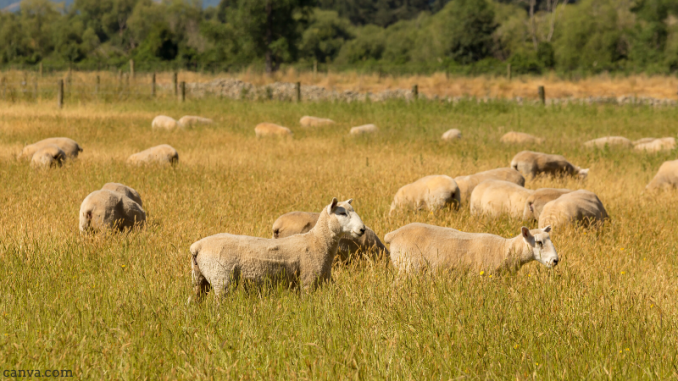
Conclusion
In conclusion, we must be sure that we are fully aware that many commonly grown offtake crops are unable to access the phosphate and potassium held within the soil profile or atmospheric nitrogen themselves (the carbon they need can be readily drawn down). Thus, they need the soil-biome/plant/animal complex to do it for them. Such is a complex that has evolved over millennia and it is the one that we must understand and work with. The fact that the soil biome contains a multitude of ultimately beneficial bacteria, fungi and microscopic creatures just makes it rather more difficult. Our neglect to acquire such knowledge has made our situation that bit worse.
However, what is increasingly clear is that we will need to manage our broadacre food-producing systems with herbivores grazing both highly diverse permanent pastures and arable cropland with rotational herbal leys and temporary cover crops. It is also unlikely that we can restore degraded grasslands, including those now classified as arable, without them. Understanding how these systems function must be the priority for anyone who wishes to partake in discussions around what are sustainable food systems because without such knowledge, simple solutions can look attractive, while the consequences of their adoption may eventually prove very destructive.
In part three of this series, Stuart Meikle will examine the role of methane in sustainable farming.
In case you missed it, here’s part one, and here’s Stuart’s primer on soil carbon.
More on sustainable food systems
Counting Apples or Oranges? | Climate Change Stats vs Food Systems Thinking
Recharging Soils with Carbon Could Make Farms More Productive
#SoilMatters Part 5 | Stuart Meikle on Soil, Ruminants & Sustainable Food
A More Resilient, Equitable & Inclusive Agricultural & Food System
More on regenerative agriculture
AgtechTakeback: Tech Revolutions, Retro-Innovations and Humus Farming
The Myth of Climate Smart Agriculture – Why Less Bad Isn’t Good
Regenerative Agriculture part 1 | Resources Must Be Replenished
Regenerative Agriculture part 2 | A Soils-First Farming & Food Policy
Regenerative Agriculture part 3 | Working With Nature, Not Suppressing It
Organic Outflanked? Conventional, Biological and Regenerative Challenge(r)s




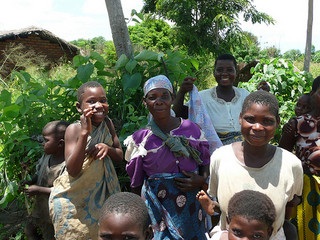
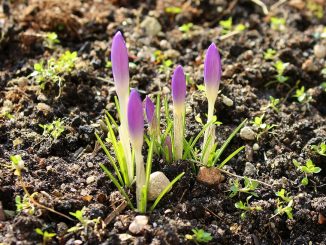
3 Trackbacks / Pingbacks